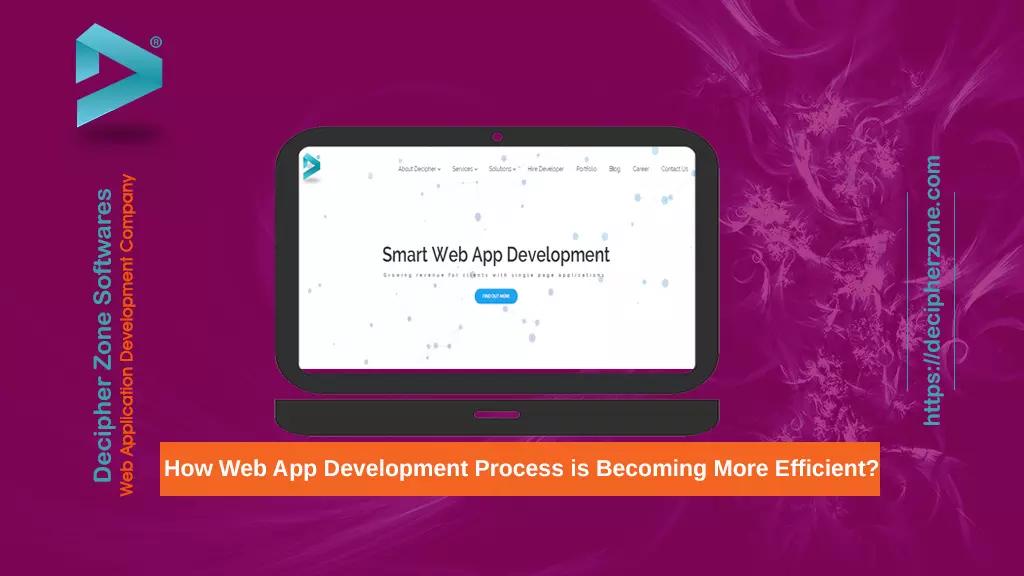The software development industry is extremely competitive these days, the clients want the projects to be developed on lower costs with a higher level of customer satisfaction. The lowering budgets, consistently increasing competitors in the market and higher complexity of projects has forced software and web app development companies to improve their working process. In the first decade of this century, Agile principles were adopted first and then later on the sprint for improvement has begun to improve the efficiency of web app development in every area.
Improvement in the efficiency of the Web application development process can be divided into 7 modules which are as following:
Read: "The process of web application development"
Top 7 Web App Development Modules
1. Efficiency in Code Architecture
A. Monolithic Architecture
Monolithic architecture is an old school yet a powerful concept where services in the code are closely coupled to provide better performance. The concept of monolithic architecture is good enough for small projects and native applications. Since the probability of code conflicts and failure is directly proportional to the scale of the web application, therefore, the concept of microservices was introduced.
Read: "Top Benefits of Web Application Development for Business"
B. Microservice Architecture
In a microservice architecture, bigger service modules were broken down into
smaller modules which were loosely coupled. These microservices are either deployed on different hosts and instances or are routed through different controllers to ensure that the failure of one service doesn’t affect others even in the worst times.
2. Efficiency in web app development process
A. Using of Virtual Machines
While coding web developers’ system often crashes and then developers have to reinstall everything and the required configurations to run the project. This mishap increases the cost of development in a project. To avoid this concept of virtual machines was introduced where a user can run operating systems within an operating system. Nowadays’ web app development companies prefer to set up the projects on individual virtual machines and developers are asked to take the screenshots file of virtual machine periodically. In case of system crash web app developers don’t have to sit idle, they can take the VM screenshot to find a system and run the VM file to start working.
Read: "Why Progressive Web Application Development Is Trending?"
B. Using of Dockers
Using VM for running big projects was not feasible on low configuration machines. The solution was to handle all the services on a virtual environment to run projects such that need of operating system is avoided hence Docker was invented.
Read: "Top Web Application Development Frameworks in 2019"
C. Using of Kubernetes
Kubernetes is used to host dockers and more, this will be covered in the upcoming article.
D. Using frameworks
Web app development frameworks provide a new set of tools CLI tools, build tools and lot more for better performance and the rapid pace of development.
Read: "Top Web Application Development Trends"
E. Using of Code Libraries
Code libraries like Primefaces for react js, Vue js, angular and JSF provide already built components that developers can use to ramp up the speed of web app development.
F. Using project management tools
The requirement of Web app development projects is divided into milestones to continuously deliver working code. To complete these milestones sprints are designed or Kanban boards are used, these sprints, Kanban boards have tickets which are hosted on centralized project management tools to effectively track the web app development process.
3. Efficiency in Deployment and Integration
A. Using code repositories and code versioning tools
Git is a code versioning tool that is widely used and GitHub, Bitbucket are the most popular code repositories.
B. Using CI/CD tools
Continuous integration and continuous development tools like Jenkins, Travis CI, Circle CI are
D. Implementing agile principles in web app development process
E. Using Multilevel manual and automated testing
4. Efficiency on Server-side
A. Benefits of using shared server hosting services
-
Code Deployment on Multiple levels
-
Deployment on multiple server instances
-
Deployment as a High-Level API: The SOAP and REST APIs that we use normally are high-level APIs where data is in a readable form.
-
Deployment as Low-level API: Low-level APIs are those APIs which communicate on a binary level like Vulkan APIs.
B. Availability of already trained AI (Artificial intelligence) and ML (Machine Learning) models as a service
Read: "Why Angular is Better For Web Application Development?"
OCR engine Tesseract for character recognition and extraction from images, AWS Rekognition for facial recognition, AWS Polly for voice recognition are some examples of AI and ML models which are available and ready to use services in web app development projects.
5. Efficiency on client-side
-
Better and efficient hardware on client-side machines
-
Performance enhancement in web browsers with ES6 support
-
Steeply Maturing JavaScript and TypeScript Frameworks
-
Improvements in the caching process
-
Development of better image formats
6. Efficiency in security and user authentication
-
Simple user credentials authentication
-
Multi-factor authentication
-
Authentication with JWT tokens
-
OAuth 2.0
Read: "What is OAuth and How it works?"
-
Open ID connect
-
SSO Login
-
Apache Cordova on AWS
7. Efficiency in Searching
A. Simple Back End Search
-
Elastic Search
The Elastic search runs on complete database models to find entries in the database, it is used for faster retrieval of users, products and other indexes.
Read: "Why to Choose Popular Frameworks for Web Application Development ?"
-
Apache Solar
Apache Solar was specially developed for text-based searching, it can also be used to searching indexes of normal database entries.
-
Searching with Image recognition models
-
Searching with Voice recognition models
Looking for Web Application Development Company: Contact us

